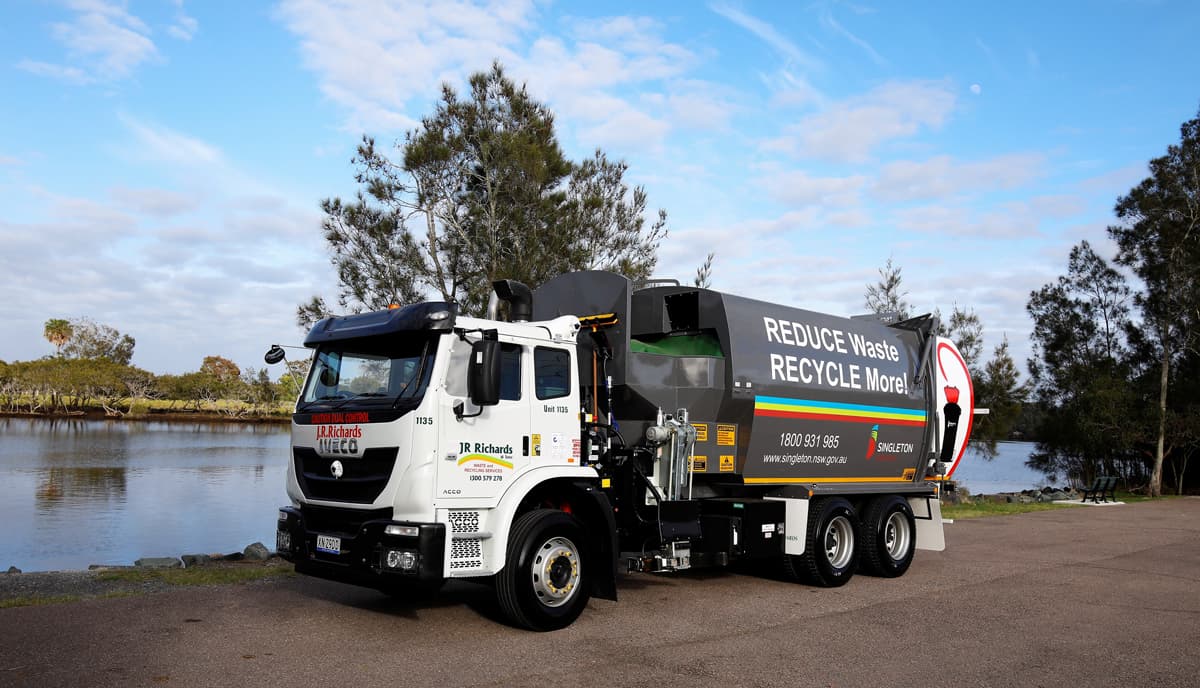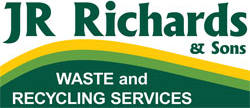Landfilling waste: method and environmental impacts
After your red-lid general waste bin is collected by JR Richards & Sons it is taken to the Singleton Waste Management Facility, located at Dyrring Road, where it is buried as landfill.
Landfills are divided into ‘cells’ and any one landfill will have multiple cells for disposing of waste. Waste materials are deposited, compacted and buried in the cells. It is important to remember that all materials placed in the red-lid general waste bin are sent to a landfill, regardless of whether they are recyclable or not, and go to waste.
Landfills are not designed to breakdown waste; they only store it. Although most of the waste materials will eventually decompose, this process is extremely slow. Some materials take hundreds or even thousands of years to breakdown. With growing local and national populations, it’s more important than ever to act towards reducing your waste to prolong the life of existing landfills. In doing so, you will be helping to delay the requirement for new landfills to be constructed in the Singleton area and preserving local land.
When organic material such as food and garden waste is buried in landfill, it breaks down anaerobically (without the presence of oxygen) and in doing so, releases harmful greenhouse gases. This includes large quantities of the greenhouse gas methane, which is 24 times more harmful to the environment than carbon dioxide, and contributes to global warming and climate change.
Another pollutant known as ‘leachate’ is a highly toxic liquid that accumulates at the bottom of landfills. Modern day landfills have a number of technologies in place to capture and treat leachate to prevent it from escaping and damaging the local environment. Older landfills or those created illegally on privately owned land pose this environmental risk.
It should be noted, however, that although the process of landfilling waste is not optimal, it is the most viable method of disposing of waste materials that cannot currently be recycled or reprocessed.
Waste minimisation and waste diversion via your yellow-lid recycling bin, green-lid garden organics bin or using other waste recovery and recycling options such as backyard composting or visiting the Singleton Waste Management Facility, is the most effective way to reduce the amount of waste destined for landfill. By reducing our waste generation rate, we extend the life of landfills, decrease the demand for new disposal sites, preserve local land and reduce our overall environmental impact.
Waste as a resource
Recyclables, garden organics or other recoverable materials that are placed into the red-lid general waste bin will not be sorted; they will be lost to landfill. This is known as ‘resource loss’, as these materials could have been used to create valuable new products and items.
Creating new materials from old products is referred to as ‘closing the loop’. Minimising resource loss not only saves limited local landfill space, it also reduces the use of raw materials in the manufacture of new products. This preserves natural resources (many of which are ‘non-renewable’, such as coal and oil) and reduces the emission of greenhouse gases that contribute to global warming and climate change.
Recyclable plastics, paper and cardboard can be dropped off for free at the Community Recycling Centre, which is located at the Singleton City Waste Management Facility. If your recycling bin reaches capacity before your bin service day, consider using this free service or ordering an additional recycling bin to prevent overflow recyclables being placed into the general waste bin. Polystyrene (foam), which can take up a lot of space in general waste bins and landfill, can also be dropped off here for free.
For more ideas on turning waste into a resource, click here.
Hazardous waste disposal
Hazardous waste can be defined as any items that are labelled as flammable, combustible, corrosive, toxic, an oxidising agent or require caution when using. Hazardous waste should never be placed in kerbside bins. Common household hazardous waste examples include firefighting equipment, pool and hobby chemicals, motor oil, paints, full aerosol cans, gas bottles and fluoro light globes and tubes.
When hazardous waste is incorrectly placed in kerbside bins, there is a significant risk of a fire starting. This is due to the compacting equipment present in collection trucks, which crush the waste. Fires can also occur at waste processing facilities, posing danger to the full gamut of waste workers.
In addition to the significant health and safety risk to waste workers and the community, truck fires also cause damage to collection vehicles, resulting in high clean-up and truck repair/ replacement costs, disruption of kerbside collection services and are potentially harmful to the environment.
Heavy duty chemicals, needles and syringes, asbestos and tyres also pose human health and environmental risks and should be disposed of responsibly.
Always check items before disposing of them in the kerbside bin and contact Council if you are unsure if an item is hazardous/ what to do with it.
Drop off locations for hazardous wastes
Household hazardous wastes and Electrical waste (E-waste) can be dropped off for free at Council’s Community Recycling Centre located at the Waste Management Facility. Click here for the full list of what is accepted, street address and trading hours.
Chemicals and pesticides can be dropped off for free during a scheduled Household Chemical Cleanout event at Council’s Community Recycling Centre.
Household quantities (up to a maximum of 20 litres or 20 kilograms of a single item) of the following household chemicals and items are accepted:
- Solvents and household cleaners
- Floor care products
- Ammonia-based cleaners
- Pesticides and herbicides
- Poisons
- Pool chemicals
- Hobby chemicals
- Motor fuels
- Fluorescent globes and tubes
- Acids and alkalis
- Smoke detectors
- Paint and paint-related products
- Gas bottles
- Fire extinguishers
- Car and household batteries
- Motor oils and cooking oils
Click here For more information on the next event near you or call 131 555.
Sharps such as needles and syringes pose a health risk to waste workers and other community members and should not be placed in any of the household bins. It is the responsibility of everyone using these items to dispose of them appropriately. Click here for information on community sharps disposal options in NSW.
Asbestos is a minute mineral fibre which is known to cause severe health conditions when inhaled. As dictated by law, a licensed asbestos removal contractor must be contacted for the removal of:
- All friable asbestos
- More than ten (10) metres of bonded asbestos (about the size of a small bathroom)
- If bonded asbestos is damaged or weathered
Click here to find a facility that accepts household asbestos via the NSW EPA’s website.
Tyres can be dropped off for free once a year on a scheduled date at the Singleton Waste Management Facility. Click here for information regarding restrictions and the next upcoming date. Alternatively, tyres can be disposed of at the facility year-round for a fee. Click here to see fees and charges.



